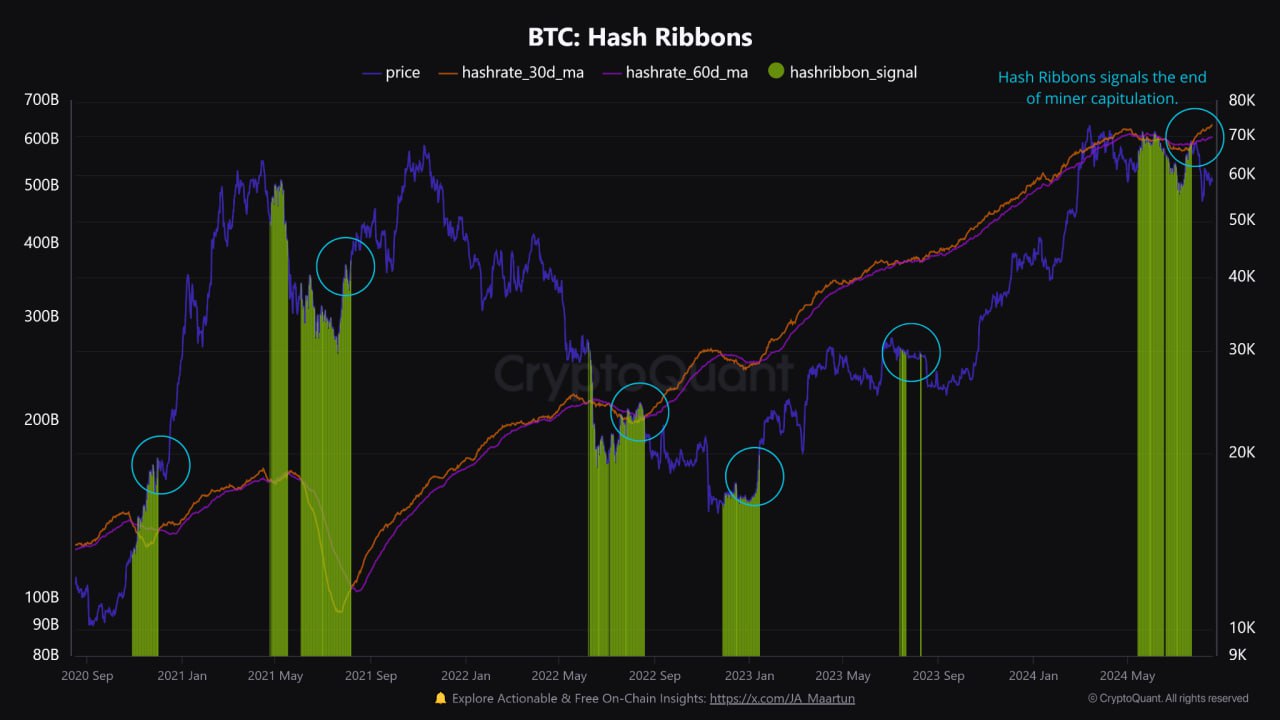
On-chain data shows that the Bitcoin Mining Hashrate has bounced recently, suggesting miners are back to expanding their facilities.
Bitcoin Mining Hashrate Has Rebounded From Its Recent Lows
The “Mining Hashrate” refers to an indicator that keeps track of the computing power the Bitcoin miners have currently connected to the network. It’s measured in units of terahashes per second (TH/s).
When the metric’s value goes up, existing miners are adding to their facilities, and new miners are joining the network. Such a trend implies the miners are finding the network attractive.
On the other hand, a decline in the indicator suggests some miners have decided to disconnect from the blockchain, likely because they are no longer finding mining profitable.
Now, here is a chart that shows the trend in the 7-day moving average (MA) of the Bitcoin mining Hashrate over the past year:
The value of the metric appears to have been going up in recent days | Source: Blockchain.com
As displayed in the above graph, the 7-day MA Bitcoin Mining Hashrate had come down to around 610 million TH/s earlier in the month from an all-time high of 667 million TH/s in late July. The reason behind this trend is probably the bearish momentum BTC had witnessed during the period.
Miners make most of their income through the block subsidy, which is given out at a fixed BTC rate and a fixed time interval. Thus, the only variable related to these rewards is the USD price of the cryptocurrency. The asset’s earlier drawdown had a drastic effect on miner finances.
BTC had gone as low as under $50,000 in this crash, but the asset has since made some notable recovery, although it’s still far from the $70,000 level that it was at near the end of last month.
Interestingly, despite the insufficient recovery, the 7-day MA Mining Hashrate has shown a sharp rebound over the past week, hitting a 650 TH/s two days ago. It would appear that some miners may be betting on a better outcome for the asset shortly.
A popular indicator used to keep track of the BTC miners’ situation based on the Hashrate is the “Hash Ribbons.” The ribbons here refer to the 30-day and 60-day MAs of the Hashrate.
When the former crosses under the latter, miners are considered to be going through a phase of capitulation, as they are rapidly taking their computing power offline, historically, BTC has tended to see some bottom when miners have been distressed.
The on-chain analytics firm CryptoQuant has discussed the latest trend in this metric in a new post on X.
The data for the Hash Ribbons over the last few years | Source: CryptoQuant on X
The chart shows that the Bitcoin Hash Ribbons had been giving a capitulation signal earlier, but the 30-day MA has since crossed back above the 60-day.
“Although the indicator isn’t meant to pinpoint the exact price bottom, it often precedes higher prices by signaling a reduction in selling pressure from miners,” explains CryptoQuant.
BTC Price
At the time of writing, Bitcoin is trading at around $58,800, down 4% over the past week.
Looks like the price of the asset has been moving sideways over the last few days | Source: BTCUSD on TradingView
Featured image from Dall-E, CryptoQuant.com, chart from TradingView.com






Be the first to comment